La Petronilla
Nature and art on the doorstep
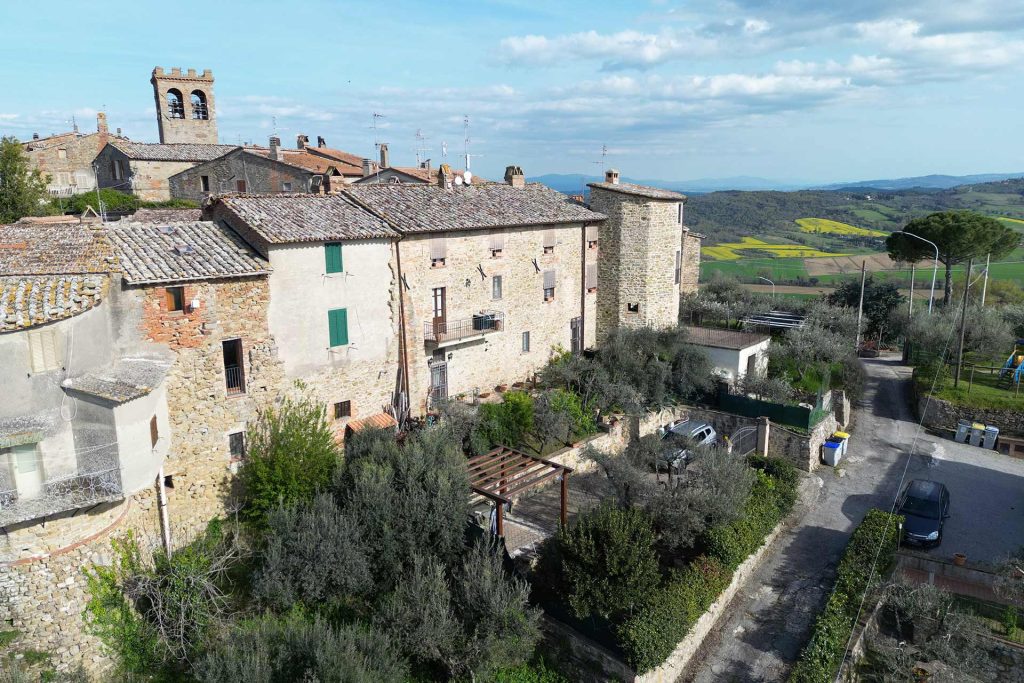
Montepetriolo and its surroundings
“La Petronilla” Holiday Apartments, completely renovated, formapart of the ancient walls of the small medieval village of Montepetriolo on the outskirts of Perugia. (http://www.montepetriolo.it) The origin of the town dates back to the twelfth century, when the Emperor of Germany Frederick I, also known as ‘Barbarossa’(Redbeard),came down to Italy in order to restore the rights of the feudal lords, taking under his protection the Bishop, Perugia Cathedral and a number of castles and medieval villages, one of which was Castrum Montis Petrioli or the Fortress of Monte Petriolo. The plan of the fortified village of Montepetriolo is ellipsoidal in shape, and at one time it probably had a dozen or so towers and turrets. Two have survived in perfectly preserved condition and stand at either side of La Petronilla. As you look out from the terraces of La Petronilla, the view is breathtaking. In fact, Montepetriolo is totally immersed in the Umbrian Valley, yet at the same time just a short distance away from all the major historical and cultural towns and cities in the region. Its location overlooks the valley of the River Nestore and offers views of the villages and towns of Marsciano and Piegaro to one side, and Panicale, the area of Lake Trasimeno, Corciano, Agello and Solomeo to the other. An eye-catching feature among the fields at the foot of the hill is the Pietrafitta artificial lake, are cognised Nature Park and an important site for world class competitive carp fishing (the world carp fishing championship was held here in 2011). http://www.museopaleontologicopietrafitta.it/)
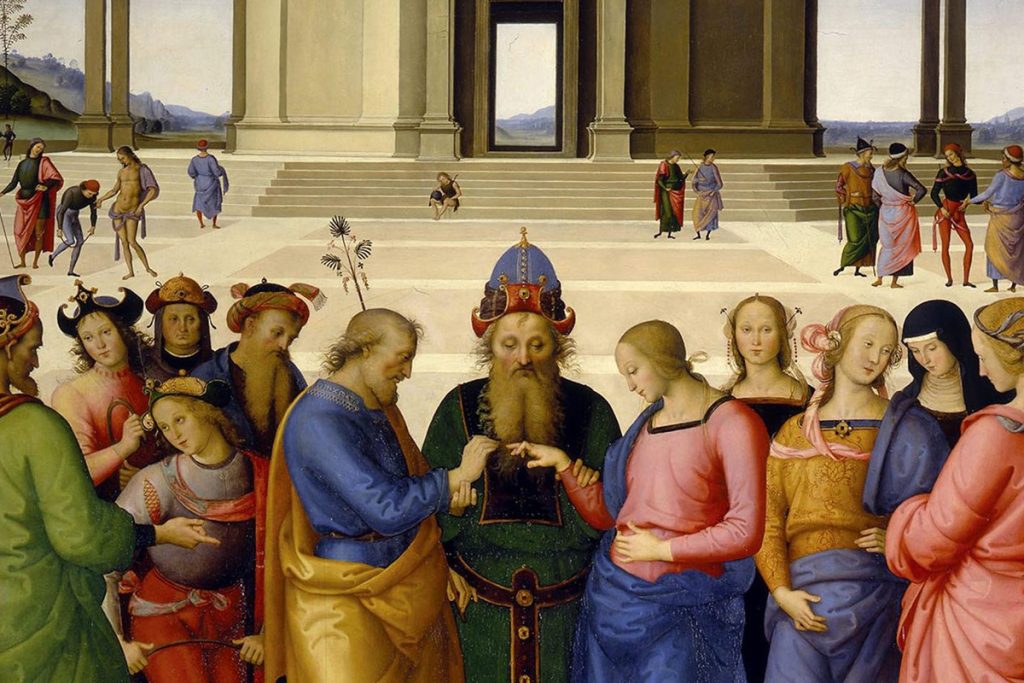
Umbria, land of artists
Montepetriolo is located in the heart of Central Italy, close to the many cultural and scenic attractions of Umbria, Tuscany and Alto Lazio. Perugia, Todi, Città della Pieve and Lake Trasimeno are all about twenty minutes away, Assisi is thirty, Siena an hour, and both Rome and Florence can be reached in just over an hour and a half. Not far away are the historic towns of Orvieto, Gubbio and Spoleto. In the immediate vicinity of Montepetriolo are a number of treasures of inestimable cultural value (works by Giovan Battista Caporali, Nicholas Circignani aka ‘Il Pomarancio’, Bramante, Pinturicchio and Gerardo Dottori). In fact, this is a true land of artists and painters, who found their inspiration in the landscapes and religious tradition of this area. It is impossible not to mention among these one of the greatest artists of the Italian Renaissance: Pietro Vannucci aka ‘Il Perugino’ (1450-1523). Pietro Vannucci has two nicknames;‘Il Perugino’, for his obvious ties to the city and the area of Perugia, where he created many of his works and built his reputation as one of the leading figures of Italian Renaissance art. But he was also dubbed ‘Divin Pittore’ (Divine Artist) because of the grace, expressiveness and quality of his work, which for years was a model and a point reference for other artists. His paintings, with their trademark transparency and harmonies of colour and light, their figures full of delicate grace and tender melancholy, framed in perspectives of infinite space, formed the basis of study for many of his pupils, with Raphael the most important among them. Perugino was born in Città della Pieve, but his early work experience took place in Florence in the second half of the 1400s, where he also met Leonardo da Vinci. His first documented works are from 1478, when he worked in the parish church of Cerqueto, halfway between Perugia and Marsciano. The church contains a beautiful but little-known painting of San Sebastian. However, the experience that marked Pietro Vannucci’s career is undoubtedly linked to the decoration of the Sistine Chapel. Summoned by Pope Sixtus IV, Il Perugino took part in the work between 1481 and 1483, along with Botticelli, Ghirlandaio and Cosimo Rosselli. From that time on, Pietro Vannucci experienced success after success, receiving compliments and requests from all over Italy. Perugino opened two workshops, one in Florence, the other in Perugia, showing great organisational and entrepreneurial skills, and so was able to meet the demands of his illustrious clients, to whom he delivered extremely well finished and by no means hurried works. Isabella d’Este, Marchioness of Mantua, had to wait five years for the Battle between Love and Chastity (1505), now a treasure of the Louvre. Many works from those years were made for Florentine patrons: the Madonna appearing to St. Bernard (1493,Alte Pinakothek, Munich), a portrait of Francesco delle Opere(1494, Florence, Uffizi Gallery), the Lamentation over the Dead Christ(1495, Florence, Palazzo Pitti), the Crucifixion fresco in the church of Santa Maria Maddalena dei Pazzi (1495-96), the large Vallombrosa altarpiece of Vallombrosa (1500, Florence, Uffizi Gallery), the Annunciation altarpiece from (1505-07,Florence, Galleria dell’Accademia). Equally important commissions came from Umbria, where Pietro Vannucci left his artistic mark. Several of his works are preserved in Perugia, among them Our Lady of Grace between SS Anthony Abbot and St. Anthony of Padua in the monastery of S Agnes; Our Lady of Grace in the Cathedral of San Lorenzo; the frescos of S. Scolastica, Girolamo, John the Evangelist, Gregory, Boniface and Martha in the church of S Severus; the Pietà (which remained unfinished due to the artist’s death in 1523), and the four small panels depicting S. Ercolano, Mauro, Costanzo, Pietro Vinicioli, Scolastica and the Madonna and Child, preserved in Palazzo Baldeschi. Testimonials of the extraordinary quality of Perugino’s art can also be seen close to La Petronilla. For example, travelling only a few kilometres on a hypothetical brief tour we arrive at the nearby village of Fontignano, where Il Perugino is buried in the church of the Madonna and Child. In the Oratory of San Sebastiano in Panicale is The Martyrdom of St. Sebastian; in the Oratorio dei Bianchi in Città della Pieve is the Adoration of the Magi; in the Cathedral, The Virgin in Glory with SS Gervasio, Peter, Paul and Protasio, and the Baptism of Christ, and in the dei Servi church, the Deposition from the Cross and the Lamentation over the Dead Christ, while in the basilica of Santa Maria degli Angeli there is the Crucifixion. Of course, these are just some of the works of the ‘Divine Artist’ that can be found scattered throughout Umbria, a region he loved and painted in all its moods. More of his paintings are preserved in Assisi, Spello, Foligno and Trevi. (http://it.wikipedia.org/wiki/Perugino) For arts and crafts, the area of Montepetriolo and Trasimeno has its major centre at Piegaro, a town that for centuries has been the focus of glassmaking in central Italy. The first reliable evidence of this activity dates back to the fourteenth century, when the skills of Piegaro’s glassmakers was required to provide coloured glass for the mosaics and stained glass windows of Orvieto Cathedral. Below an imposing brick chimney in the heart of the ancient village of Piegaro stands the ancient glassware complex where, on 18 April 2009, the Glass Museum was inaugurated. The building, a notable example of industrial archeology, records the history of the centuries-old tradition of glass production in Piegaro from the Middle Ages to the twentieth century. (http://www.comune.piegaro.pg.it/turismo-e-cultura/musei/museo-del-vetro-piegaro)
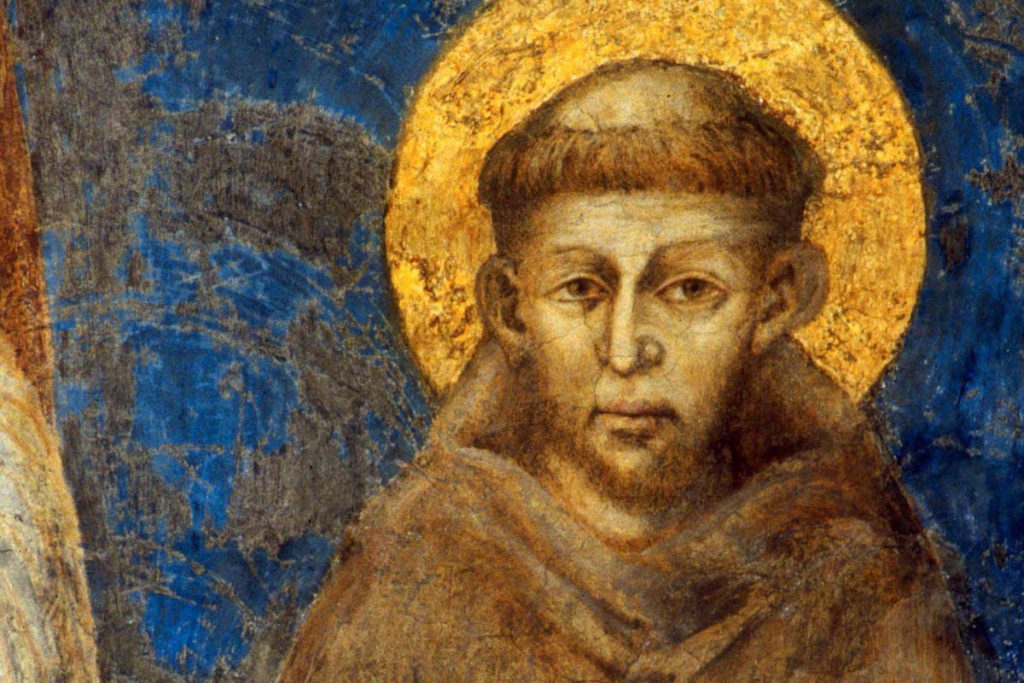
Umbria, land of saints and the religious life
Umbria is a land of peace and tranquillity, the birthplace of St. Francis, St. Clare and St. Rita of Cascia. The Franciscan Trail, which begins in Assisi and leads to Gubbio and the La Verna Sanctuary via Perugia and Valfabbrica, perfectly captures the spiritual atmosphere of these places. Many routes exist for seeking spirituality, with many places of worship along the way where you can pause and reflect. Two of these locations are just minutes from Petronilla: the Shrine of Our Lady of Grondici and the Sanctuary of Our Lady of Mongiovino. The Shrine of Our Lady of Grondici,is located in a very scenic spot near the picturesque village of Tavernelle in the municipality of Panicale. Its foundation dates from the end of the fourteenth century and is linked to a miracle: the resurrection of a child due to the intervention of a ‘Madonna’ painted on a small shrine. The origin of the word ‘Grondici’ derives from the Italian word suggrunda meaning ‘eaves’; in other words, the part of the roof that juts beyond the outer wall of a building. Medieval Catholic theology held that children who died without being baptised were sent to Limbo, and their burial in consecrated ground was forbidden. Parents therefore carried their unbaptised, dying children to the Shrine in the hope that they might still give some sign of life and receive the sacrament of baptism and a proper burial. If this did not occur, the child was buried under the eaves (sub grunda) of the house where they were born, and so the name of the Madonna delle Grondici gradually came into use. Because of its symbolic value, the sanctuary is still a place of pilgrimage, especially by mothers who pray for fertility or the protection of their children. From the artistic point of view, the sanctuary houses a large canvas painted by the German artist Gregorio Gregori, known as the ‘Teutonic’, depicting the Madonna Enthroned with SS Sebastian and Roch (1495). The banner is in two sections: the upper part portrays the Virgin on a marble throne with the naked Child Jesus in her arms, upright and giving a blessing. Beside him are angels in prayer and SS Sebastian and Roch, known for their aid and intercession on behalf of plague victims. The lower part depicts an altar bearing a naked child with his eyes open and, at his side, praying for his recovery, his parents and the hermit Fra Matteo, keeper of the shrine and commissioner of the work.(http://www.comune.panicale.pg.it/it/cultura_territorio/visita_di_tavernelle/il_santuario_delle_grondici) Close both to La Petronilla and the Shrine of Our Lady of Grondici, is the Sanctuary of the Madonna of Mongiovino, traditionally known as the site of numerous miracles. The church building, begun in first half of the 16th century following a model by Bramante, is probably the greatest example of Umbrian fresco decoration from the the second half of the 16thcentury, further embellished by the rich decorations on the side posts of the doorway arches. One of the four side chapels houses the venerated image of the Madonna and Child Enthroned from the 14th-century Umbrian school, which was originally part of a countryside shrine. Many miracles have been attributed to the painting, particularly ones involving a shepherdess named Andreana to whom the Virgin appeared asking that greater reverence be shown to the shrine. Since Andreana was not believed, the Virgin told her to carry a jug of water upside down to the inhabitants of the castle above Mongiovino. No water fell from the jug – a first miracle followed by many others. In 1513, the apparition was officially recognised by Pope Leo X in a papal bull, and in 1524, work began on the construction of the present sanctuary. Devotion to the image is evidenced by the many ex voto offerings Virgin from the faithful in the form of candles and silver and painted mementos. Of particular interest is the 18th-century bell tower that flanks the church, the small chapel dedicated to San Martino, and the Pious homes. The architecture of the sanctuary became a model for other churches, such as Santa Maria Nuova in Cortona, designed by Vasari. (http://www.comune.panicale.pg.it/it/cultura_territorio/visita_di_tavernelle/santuario_della_madonna_di_mongiovino)
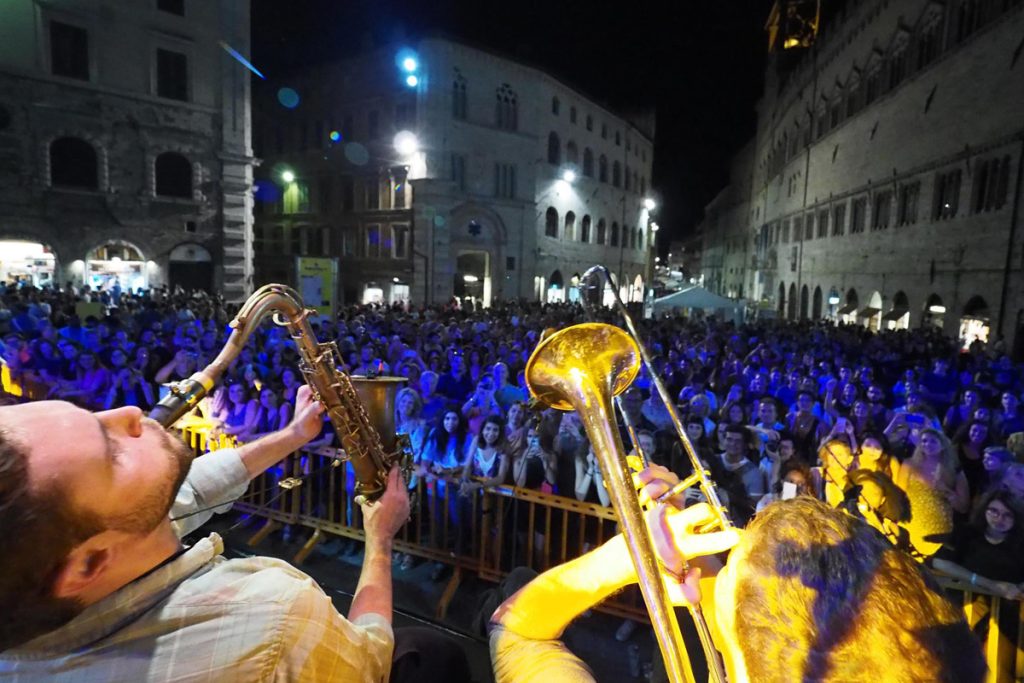
Umbria, land of music
Whether because of its location in the centre of the country, in proximity to the major locations of central Italy, or perhaps because of its stimulating and inspiring scenery, the fact is that Umbria attracts world-famous artists, and there are always important events to attend with performances by big names or promising newcomers destined for success. In summer in Perugia, and in winter in Orvieto, the biggest stars from the music scene can be seen on stage at the Umbria Jazz Festival. Herbie Hancock, perhaps the greatest American jazz, fusion, and funk pianist and keyboardist, also famous for having been a member of the legendary Miles Davis Quintet, has repeatedly said that Umbria Jazz ‘is the place you need to be at this time of year’. Umbria Jazz, abbreviated as ‘UJ’, is Italy’s most important jazz music festival. It began in 1973 and is held annually in Perugia in July. Perugia All the greatest jazz artists, but also those of other genres, have appeared on stage here. As well as Herbie Hancock there has been Sonny Rollins, Randy Crawford, Michel Petrucciani, Phil Collins, Al Jarreau and Keith Jarrett, but also Elton John, Carlos Santana, James Brown, Donna Summer, Eric Clapton, Earth Wind & Fire, Simply Red, George Benson and the pop icon Alicia Keys. (www.umbriajazz.com) But Umbria is not only UJ – the region’s theatre and arena stages are full summer and winter long. Just to name a few other music events in the area: the Narni Black Festival , the Trasimeno Blues Festival , Umbria Music Fest , the Spoleto Festival of Two Worlds, and the Todi Art Festival.
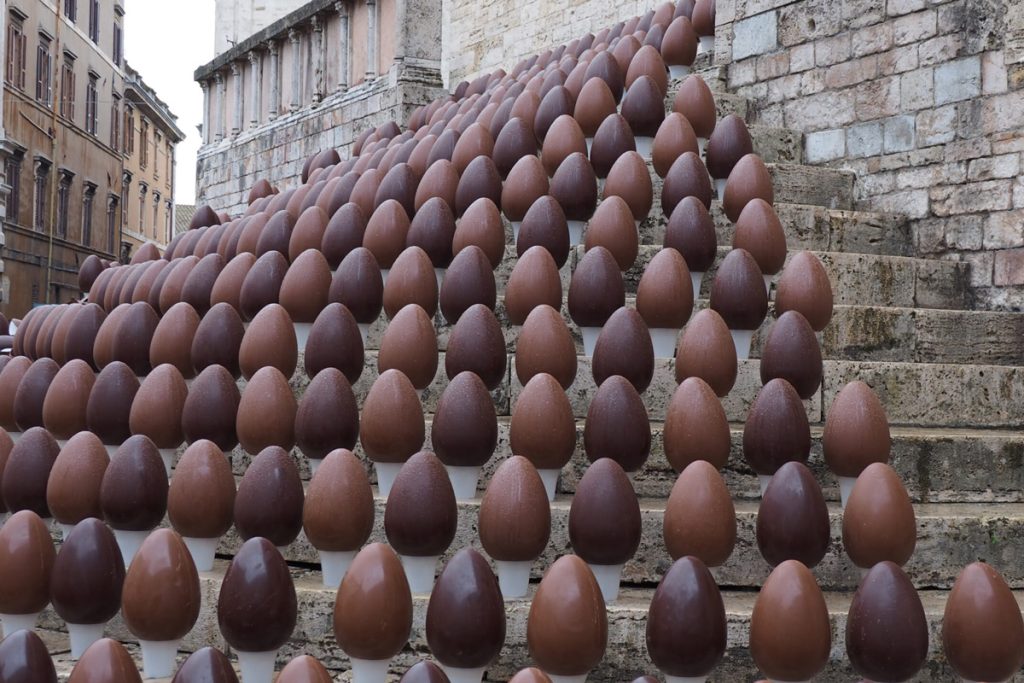
Umbria, land of chocolate
Every year for the past twenty years, Perugia, home of Baci Perugina, becomes Chocolate City during the EuroChocolate event(www.eurochocolate.com) Attended by an ever-growing number of visitors, it showcases products fromthe world’s chocolate industry. Perugia has always beenpart of the chocolate-making tradition. The famous Baci Perugina (https://www.baciperugina.it) were created here in the 1920s, the idea of Luisa Spagnoli. They soon began their journey from Perugia and are now enjoyed and appreciated the world over. The idea of Eurochocolate was a natural addition that celebrates this Umbrian tradition. The event, the brainchild of architect Eugene Guarducci in 1993, is entirely dedicated to the tradition of Italian and international chocolate-making, attracting a great many visitors and both handmade and industrial chocolate manufacturers, who sell their products in the city streets and in equipped exhibition space. Many additional events, shows and cultural occasions enliven the streets, squares and places of art and tradition in Perugia’s historic city centre. One of the most noteworthy moments is the Chocolate Sculpture event, when skilled sculptors work on one-metre cubes of chocolate, creating sculptures that remain on display for the duration of the Eurochocolate festival.